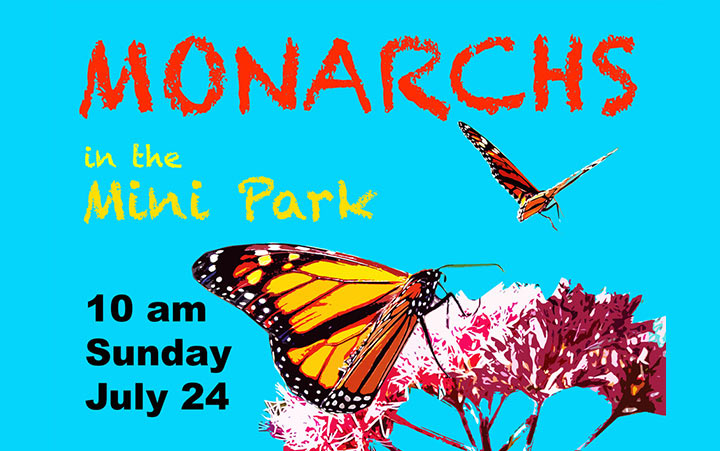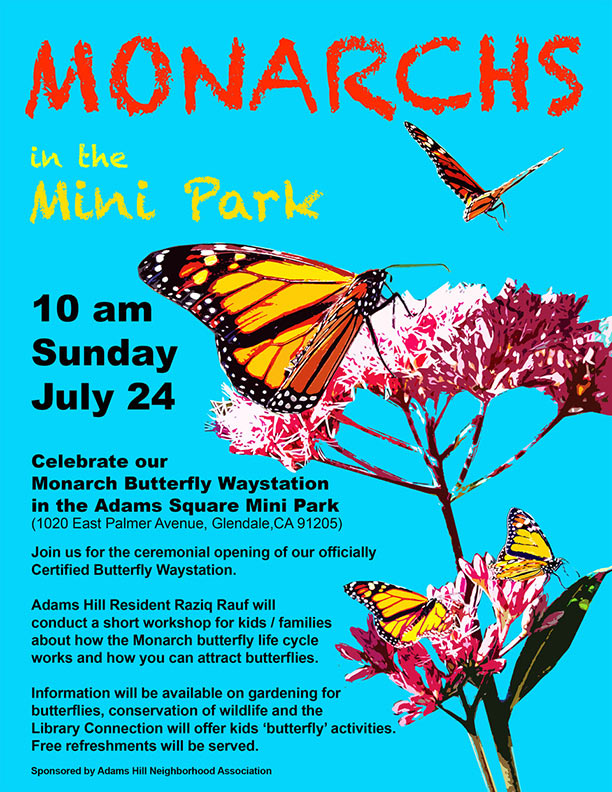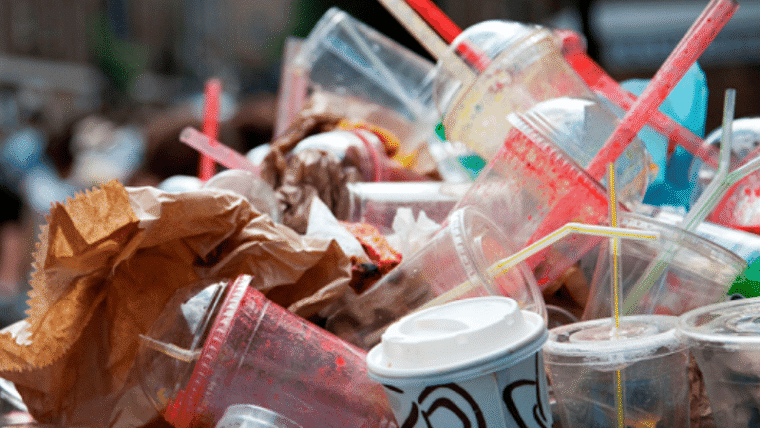GEC is pleased to help spread the word regarding this event sponsored by Adams Hill Neighborhood Association:
Celebrate the Monarch Butterfly Waystation in the Adams Square Mini Park!
Join us for the ceremonial opening of our officially Certified Butterfly Waystation.
Adams Hill Resident Raziq Rauf will conduct a short workshop for kids/families about how the Monarch butterfly life cycle works and how you can attract butterflies.
Information will be available on gardening for butterflies, conservation of wildlife and the Library Connection will offer kids “butterfly” activities. Free Refreshments will be served.
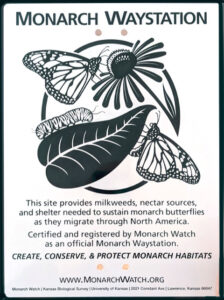
Want to support Monarch Butterflies in your own garden? Here are some resources!
1: The only plant Monarch caterpillars eat is milkweed. Learn why planting native milkweed is best and why tropical milkweed creates serious concerns for monarchs.

Here is an excerpt from a Los Angeles Times Article that explains it well:
6 Ways Californians Can Help Save the Iconic Monarch Butterfly
“Monarch caterpillars eat only one plant — milkweed — and many Californians have planted the showy tropical milkweed (Asclepias curassavica) to help. Indeed, most SoCal nurseries offer only tropical milkweed, a handsome non-native plant with feathery purplish-green leaves and deep orange flowers.
But well-meaning gardeners who plant this kind of milkweed are actually harming, not helping.
The problem is that tropical milkweed doesn’t die back during the winter in temperate climates like Southern California’s, according to the Xerces Society for Invertebrate Conservation. That permits protozoa parasites (Ophryocystis elektroscirrha, or OE) to multiply on the plants, which are eaten by the caterpillars when they hatch.
When the caterpillars consume too many OE parasites, scientists believe it sickens and weakens adult monarchs, messing up their migration patterns, mating success, flight ability and lifespan. And having milkweed that blooms through the winter also disrupts the butterfly’s migration patterns, experts say.
In other words, those evergreen tropical milkweed do more harm than good in Southern California, says Ron Vanderhoff, general manager of Roger’s Gardens nursery in Corona del Mar. That’s why the nursery stopped selling tropical milkweed a couple of years ago.”
The Xerces Society has an excellent article on why planting native milkweed is best, what kinds we have here in California, how to plant them and when: https://xerces.org/sites/default/files/publications/19-004.pdf
2: What do Native California milkweeds look like? What kinds are there?
There are fifteen species of milkweed native to California, but the two most easy to find for purchase are Showy Milkweed (Asclepias speciosa) and Narrow Leaf Milkweed (A. fascicularis). Both die back in late fall (around November) which signals to the migrating Monarchs that it is time to migrate, but create vigorous underground root systems and will pop up again in Spring, usually around mid-March or early April. March/April is also the best time to plant from seed. Of the these two types, Narrow Leaf is a bit easier to get established in our SoCal region. While slow to establish, a few years in you will begin to see your milkweed colony grow!
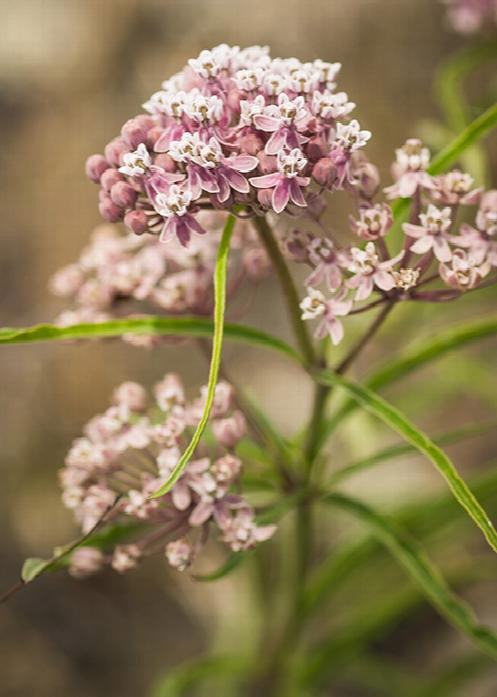
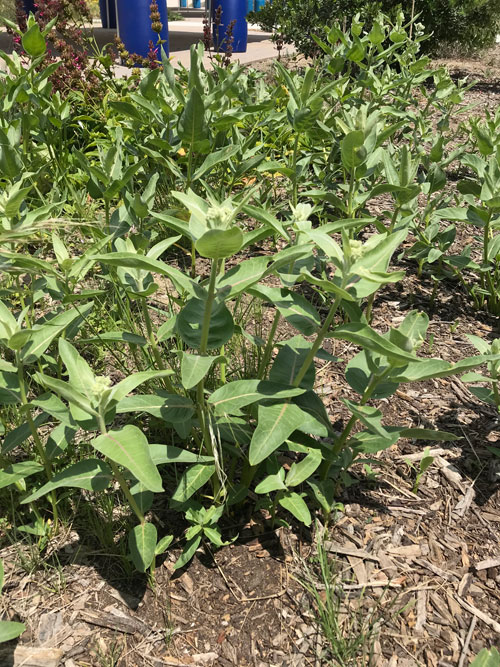
3: Here are places you can buy California Native Milkweed (starting mid-April) & California Native Plants year round.
Visit the California Native Plant Society’s extremely helpful CalScape website to check for additional native plant growers in your area. Check in with your local retail nurseries to see whether and when they will be selling native milkweed (usually starting mid-April) and/or other flowering native plants.
Artemisia Nursery, 5068 Valley Blvd. in El Sereno, artemisianursery.com
California Botanic Garden Grow Native Nursery, 1500 N. College Ave. in Claremont, calbg.org
Hahamongna Native Plant Nursery, 4550 Oak Grove Drive in Pasadena, arroyoseco.org/nursery
Roger’s Gardens, 2301 San Joaquin Hills Road, Corona del Mar, rogersgardens.com
Theodore Payne Foundation nursery, 10459 Tuxford St. in Sun Valley, theodorepayne.org and online store (you can check stock here)
Tree of Life Nursery, 33201 Ortega Highway in San Juan Capistrano, californianativeplants.com
4: Here are guides on how to plant and care for your Native Milkweed (plus a beautiful children’s book about Monarchs!)
Planting Milkweed from Seed – web post from Theodore Payne Foundation
Planting Narrow Leaf Milkweed – pdf brochure from Theodore Payne Foundation
Native Milkweed Planting and Establishment in California – pdf from Xerces Society
Monarch Recovery Project – info packed web page from Arroyos & Foothills Conservancy
Children’s Book about Monarch Life Cycle (extremely informative and beautiful artwork!) – Monarch Butterflies: Explore the Life Journey of One of the Winged Wonders of the World
5: Here are additional resources, to help you learn about pollinator friendly plants for your garden, designing with and caring for native plants, and more!
Theodore Payne Nursery – Visit in person or check out their website for a tremendous vault of information on native plants, including milkweed and other pollinator friendly plants!
Check out this “Native Plants for Butterflies and Moths” PDF from Theodore Payne Foundation
Get tips on designing a Water Wise Garden for Glendale at www.myspartgarden.com
Visit the California Native Plant Society’s extremely helpful CalScape website to use their Calscape Garden Planner (find plants unique to your zip code and design ideas for a range of landscaping styles.)
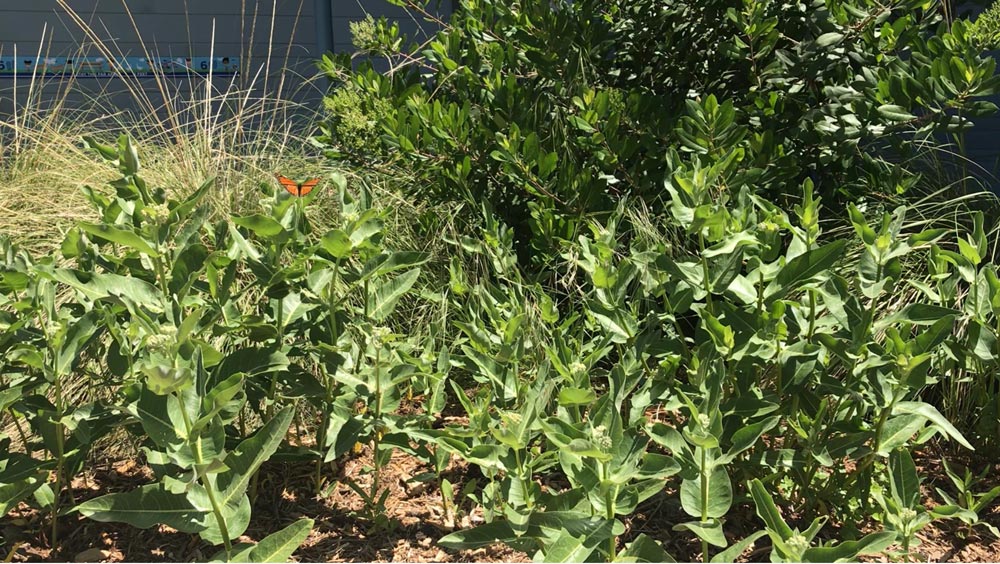
Discover more from Glendale Environmental Coalition
Subscribe to get the latest posts sent to your email.

